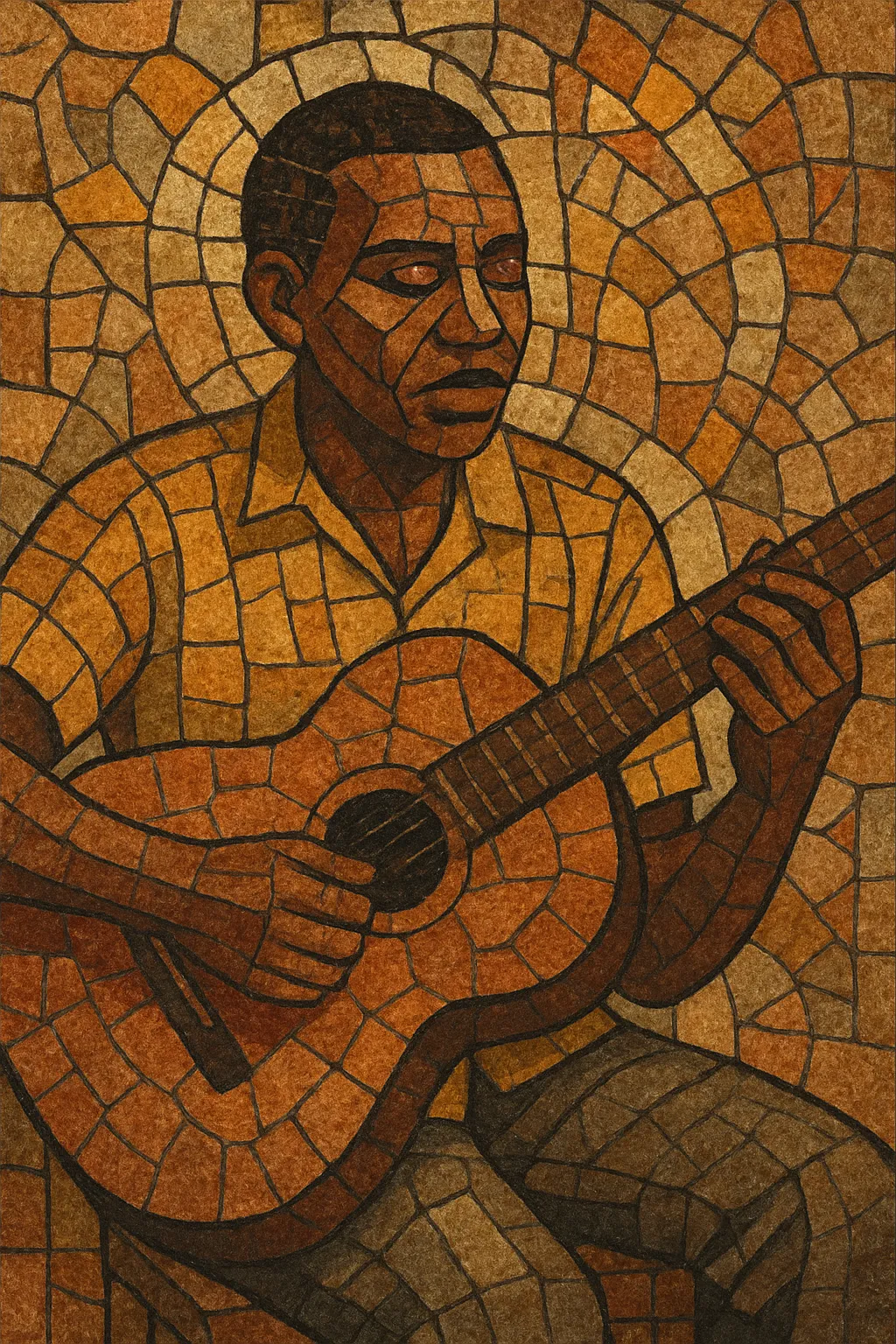Kadongo kamu is a Ugandan singer‑storyteller tradition whose name in Luganda literally means “one little guitar,” referring to the typical solo performer accompanying themselves on a single acoustic guitar.
The style is built on steady, alternating bass lines with simple, memorable melodic figures, and strophic, proverb‑rich lyrics delivered in Luganda. Songs address everyday life, morality, satire, social commentary, love, and community history, often with humor and didactic intent.
Arrangements are sparse—usually voice and one guitar—with occasional light percussion (shakers, calabash) or a supporting vocal. Tempos are moderate, the groove is grounded in 4/4 with Kiganda rhythmic feel, and the performance centers on clear diction and narrative flow.
Kadongo kamu crystallized in central Uganda (Buganda region) during the 1960s as a locally rooted storytelling song form adapted to the acoustic guitar. The solo format—voice plus one guitar—made it portable and affordable for itinerant performers and radio appearances. Its rhythmic feel and proverbial imagery draw from Kiganda folk song and spoken storytelling traditions, while the guitar idiom reflects broader East African uptake of string instruments in the mid‑20th century.
As local recording and radio infrastructure expanded, kadongo kamu gained a dedicated audience. Singers became recognizable public commentators, using songs to discuss social behavior, family life, and community concerns. The music remained intentionally sparse to keep the focus on lyrics and narrative clarity, even as some artists added light percussion or backing voices.
The cassette era amplified the genre’s reach. Artists such as Paulo Kafeero, Herman Basudde, Fred Sebatta, and Livingstone Kasozi recorded widely circulated albums, refining guitar patterns (alternating bass and upper‑string fills) and sharpening poetic Luganda lyricism. While some acts flirted with subtle electrification, the core aesthetic—one voice, one guitar, moral storytelling—remained intact.
In the 2000s, new performers carried the torch, maintaining the acoustic backbone while adopting contemporary production where helpful (cleaner recording, occasional background harmonies). Kadongo kamu continues to influence Ugandan popular styles by foregrounding narrative depth and proverbial wit, and it remains an emblematic vehicle for social reflection and cultural memory.


